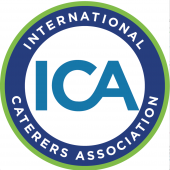The creative process is always a bit of a mystery, isn’t it? When attending events, you get to see the final product, but many don’t let you go behind the curtain and unveil their creative secrets—that is, until today.
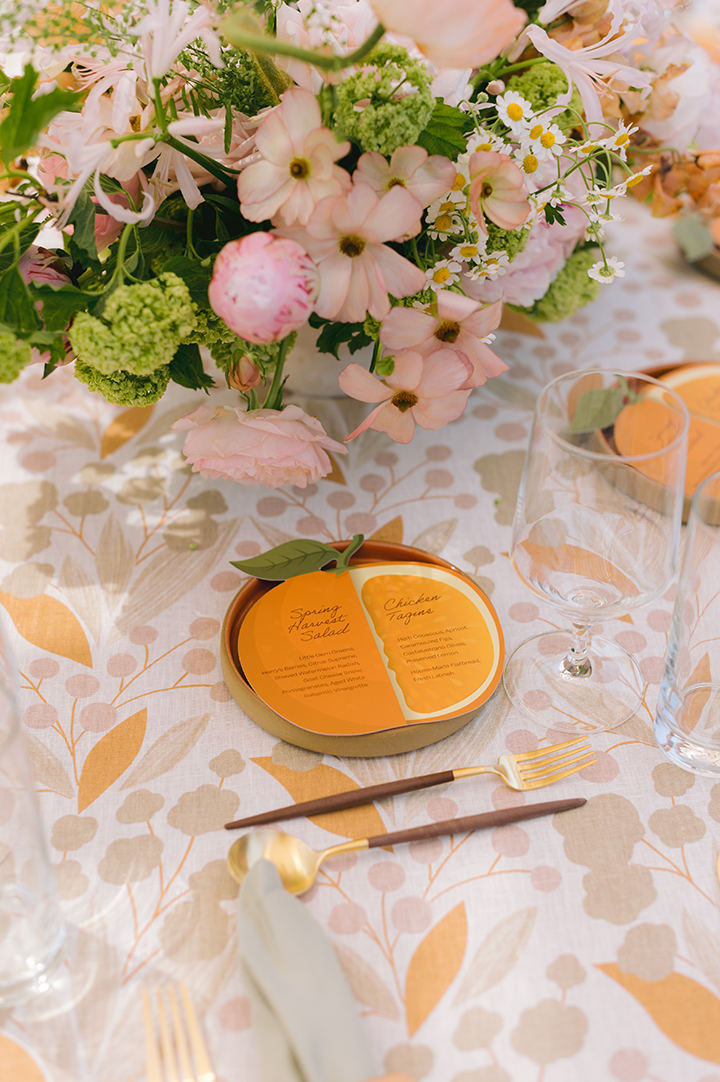
“Apples to Oranges” lunch menu featuring vibrant flavors with apple and citrus accents. Photo courtesy Lorely Meza
This past spring, 24 Carrots Catering & Events opened up the doors to their facility in Irvine, Calif. for an ICA workshop. Every member in attendance was blown away by their level of creativity and attention to detail in food, design, and service. At first glance, the agenda seemed like your run-of-the-mill workshop event. However, throughout the entire day and a half workshop, the 24 Carrots team pulled out all the stops, delighting guests with surprises and creative inspiration quite literally around every corner.
Some highlights were custom cocktails, sandwich-themed agendas (check out their Instagram for the visual), bold florals on every table, a picnic-inspired stage for presentations, and food that was just as delicious as it was fun.
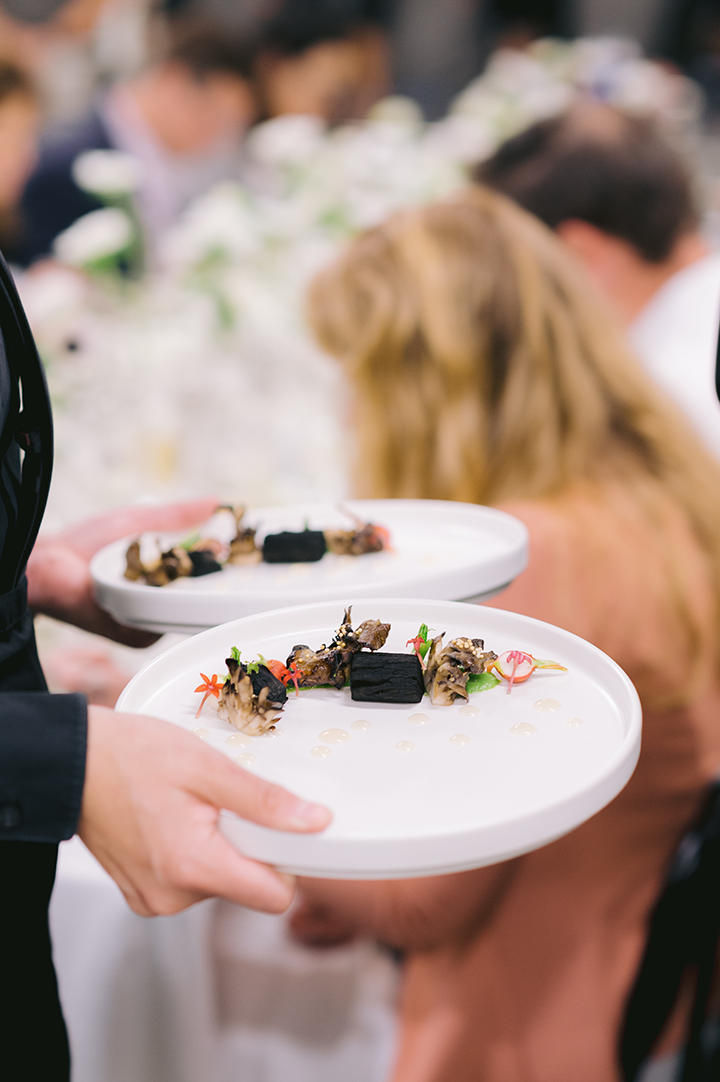
Charred Forest Salad with koji miso maitake mushroom, English pea espuma, arare rice, and chicken dashi. Photo courtesy Lorely Meza
We sat down with Carizza Rose, Marketing & Creative Director, and Laura Fabian, Chief Executive Officer, to get a rare behind-the-scenes look at the company’s creative process. We hope it inspires you to mix up your standard processes to infuse a bit more wonder and excitement into your own events, from conceptualization to execution.
Explain your creative process for events like the ICA catering workshop. When did you initiate the planning phase?
Carizza Rose: We started diving into the full planning phase about a month before the workshop itself. Prior to that, we as a leadership team had identified our key priorities, so we already knew our company goals from a high level, and each department worked toward those. The details and decisions on each menu item and guest touchpoints really didn’t start getting pinned down until much closer to the event itself. That pressure and deadline also allowed us to make decisions quickly; if we’re grappling with something that our gut second-guesses, we don’t spend more time spinning our wheels.
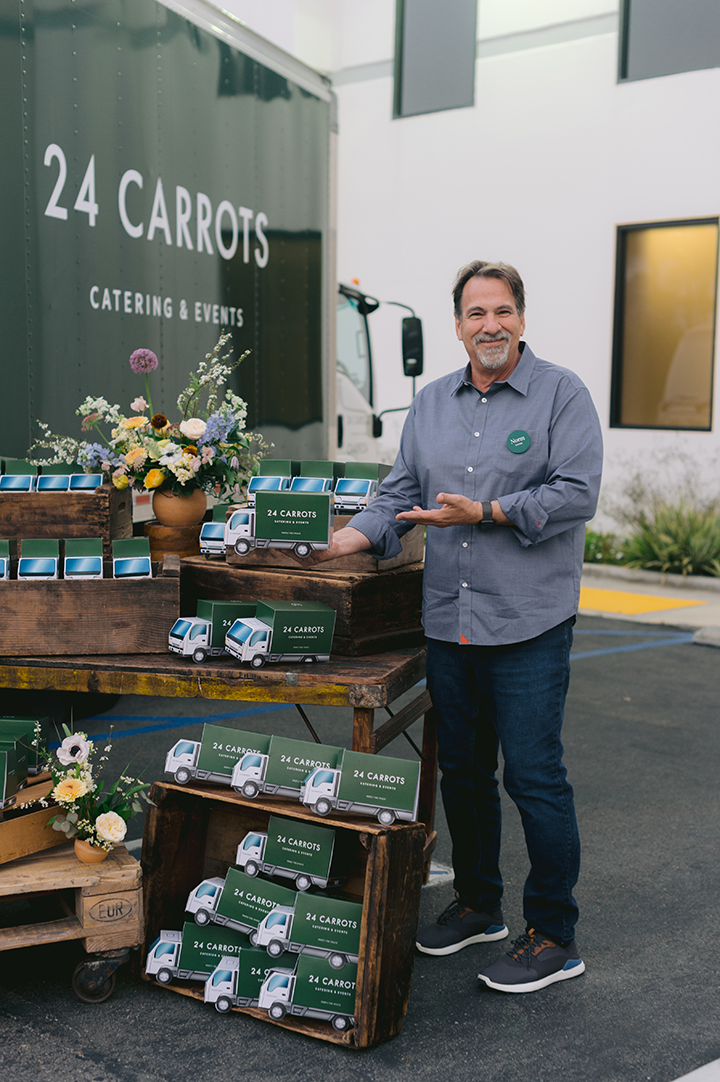
24 Carrots founder, Norm Bennett, with a fleet of miniature 24 Carrots trucks filled with a pallet of treats. Photo courtesy Lorely Meza
We also had the luxury of this fast-tracked timeline because we were the client in this instance and didn’t need to build in extra time for client approval.
Do you begin with the creative concept and then design the menu, or is it the reverse?
CR: Integrating a creative concept with the menu development is a dialogue.
For us, it typically starts with a jumping-off point that serves as your creative foundation and North Star. This could be a menu item, an experience, a display, anything really.
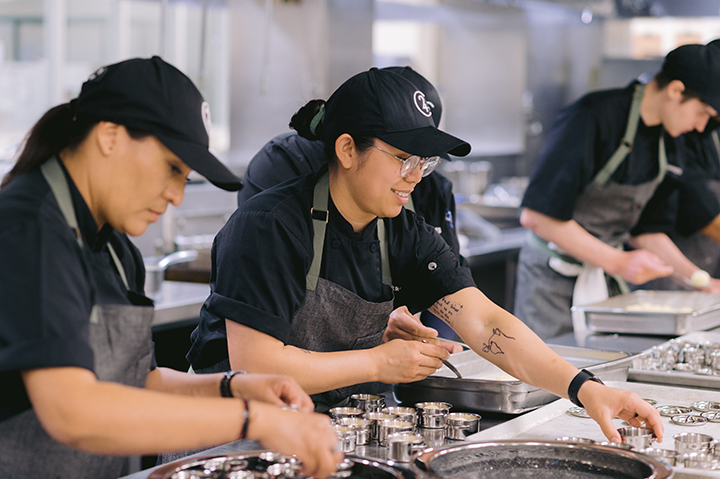
The 24 Carrots Culinary Team prepares an amuse-bouche of ricotta knodle with agrumato lemon. Photo courtesy Lorely Meza
In this case, we hosted a similar event a few years ago, and we wanted to make sure that this guest experience was varied from the previous one and had its own signature. Then, I typically do a brain dump of multiple interpretations of that spark and dedicate time to pull together inspiration. When the creative cream rises to the top, you’re left with the strongest concepts. From there, we pull together a mood board for the culinary team. We use a combination of visuals and words to convey the goal. Often, we may not have an exact inspiration image, so we’ll have to paint the picture with texture, color, and sometimes even stories. We meet with the chefs to discuss, and from there, we ask lots of clarifying questions, throw out ideas, throw away ideas—it’s very similar to the client experience. We usually don’t create the menu right then; the culinary team takes some time to collaborate among themselves, propose the menu, and go through any necessary rounds of research and development.
I certainly view menu research and development as an extension of the creative process—and of course, the most delicious part!
What aspects of the creative process are managed in-house, and what parts are outsourced?
CR: Creativity, even if you narrow it down to the field of hospitality, it still contains an extensive spectrum of skills. I usually recommend leveraging the skills you have in-house and outsourcing the pieces that don’t fit with your team (until you can potentially hire for them).
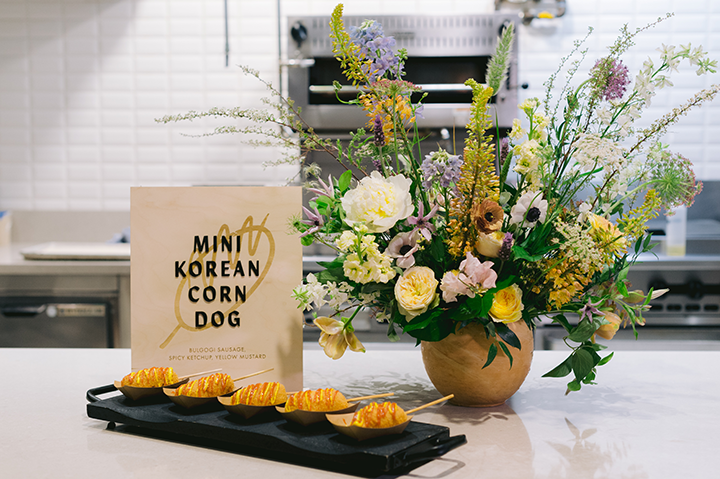
Mini Korean Gamja Corn Dog with bulgolgi sausage, spicy ketchup, and yellow mustard. Photo courresy Lorely Meza
For us, our strongest creative skills are vision, communicating that vision, and applying it practically to the tactile field of catering. While we have the capacity to do many things internally, it all depends on varying factors (scope of the project, timeline, efficiencies, labor, etc.), so we collaborate with an assortment of vendors and partners so that we have depth of bench creatively: printers, graphic designers, fabricators, woodworkers, florists, etc. A lot of our most impactful vendors actually don’t work in the event or hospitality space at all—they’re just really good at their craft, so we don’t have to be.
When seeking inspiration for all events and creative endeavors, where do you draw from?
CR: I used to say that I drew inspiration from dining adventures—from eating off a local taco truck to a fine dining experience with theatrics and flair. I’d also get inspiration from other industries, with fashion, technology, and automotive being at the top of the list; they’re all creative spaces that had nothing to do with what our company did and offered a challenge to bridge the gap between our worlds.
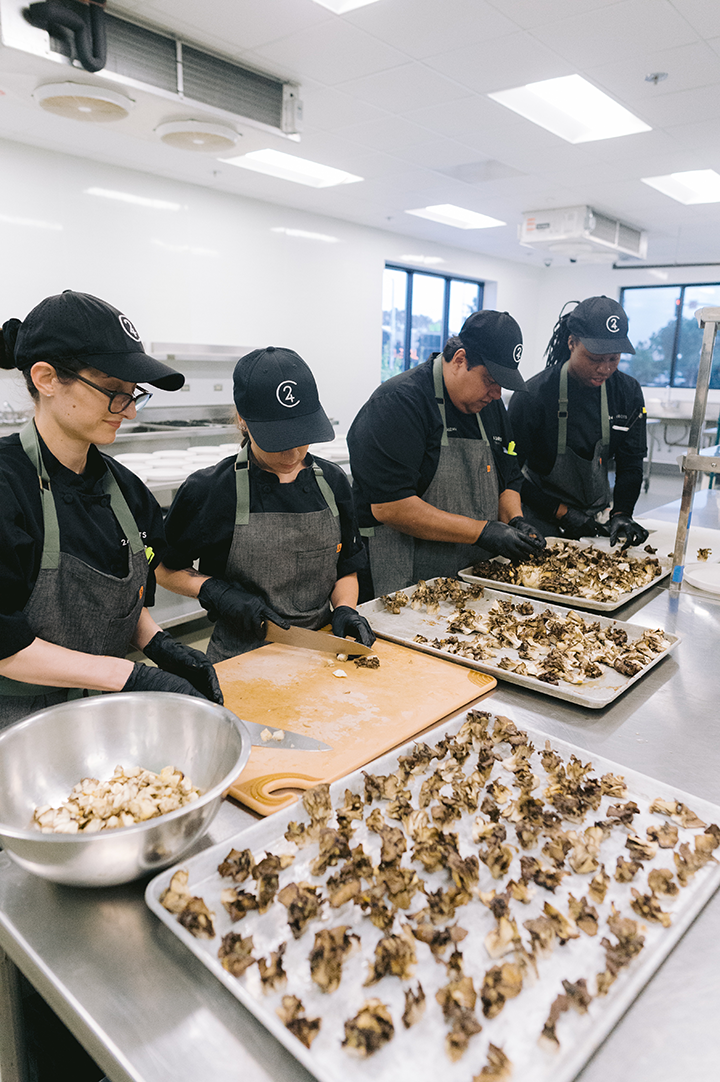
The 24 Carrots Catering & Events team preps koji miso maitake mushrooms for a “Charred Forest” Salad in the kitchen during the tour of the commissary. Photo courresy Lorely Meza
All those sources continue to inspire me. And yet, the more I’ve learned, the more I’m realizing that creativity is truly limitless.
How did you cultivate the theme for the workshop?
CR: Our overall motif for the workshop was Food for Thought. We’re in the business of playing with our food, so we wanted to present our take on the workshop as a combination of education alongside fun and play. This also reflects who we are as a company and reflects our brand strongly; even our company name, 24 Carrots, is a play on words and food, and we take pride in being playful with our concepts. Food for Thought also reflects our encouragement of curiosity and conversation for the workshop.
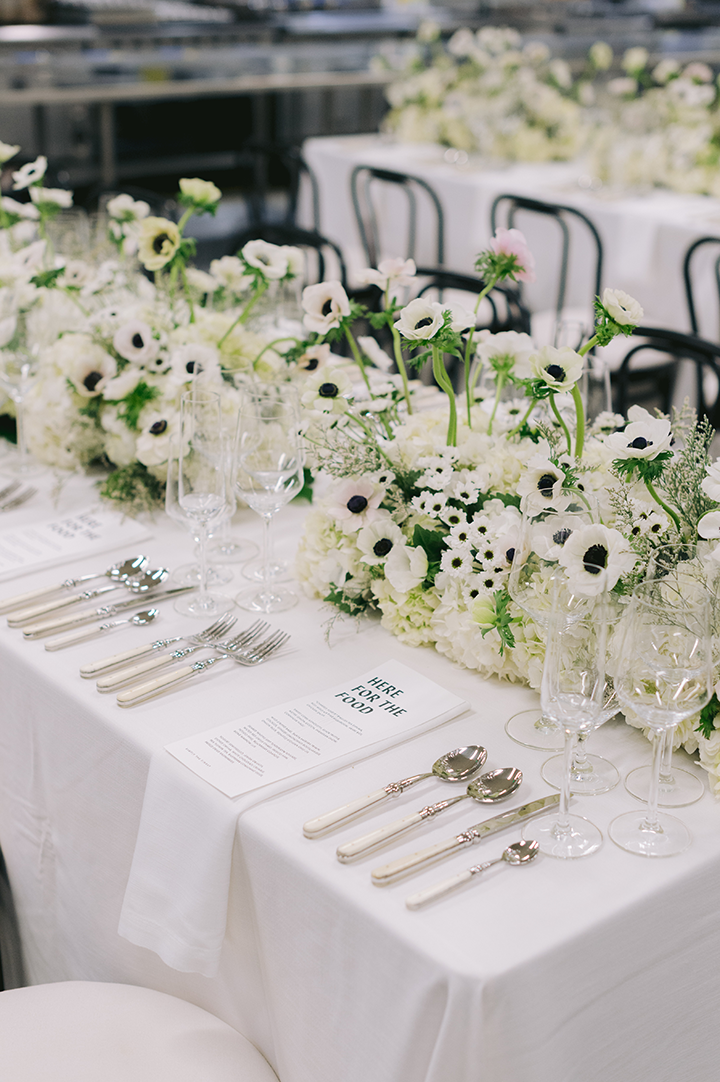
Florals were provided by The Bloom of Time and tabletop linens and rentals were provided by BBJ La Tavola. Photo courresy Lorely Meza
Our team wove a consistent message that every company and team is uniquely themselves and may have a different way that works better for them.
What do you personally think was the most unique concept you were able to bring to life?
CR: Definitely the welcome cocktails!
For most of the workshop planning process, we hadn’t arrived at a beverage offering that we loved, just sort of defaulting to a tried-and-true classic. Something in me felt restless and unfulfilled by that, since everything we create has an opportunity to inspire, and thus far, it had felt like it was just “okay”—a concept that doesn’t sit well with the 24 Carrots team. Ten days out from the workshop, I texted Laura, our CEO. I pitched some ideas and then ended with one concept that I prefaced with, “I know, I know, it’s ridiculous.” Naturally, we went with the ridiculous one because if we weren’t going to go for it in this setting, then we weren’t practicing what we were teaching.
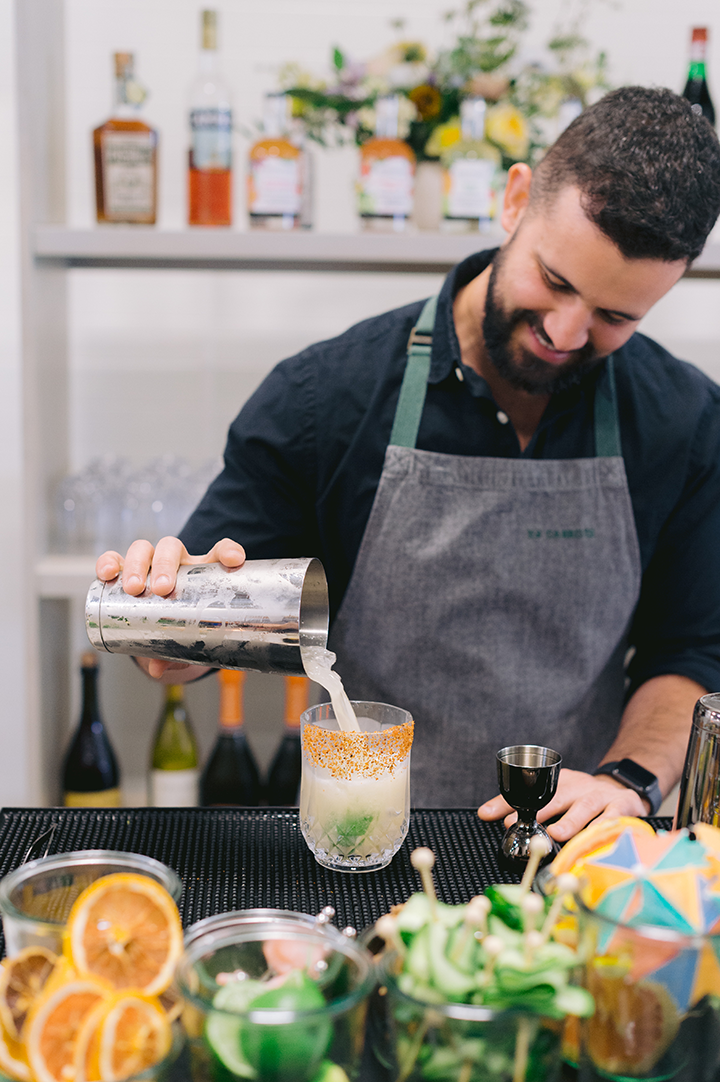
The cocktail concept for the event created custom cocktail hour beverages for every single guest, inspired by omakase dining experiences that are summed up in the translation as “I trust.” Photo courtesy Lorely Meza
This concept proposed custom cocktail hour beverages for every single guest, inspired by omakase dining experiences that are summed up in the translation as “I trust.” An omakase cocktail experience is typically one reserved for the most bespoke of cocktail lounges or elite bar programs. Translating this to the catering and events world was a challenge that required information from each guest on their unique preferences, along with time to build these cocktails. Upon registration check-in, guests were asked to fill out an “icebreaker” without being told what it was for. It asked five simple questions regarding their preferences—only one of them beverage-related, but the rest based on personality and style. To buy us time, we built in the element of surprise. After guests filled out their icebreakers, they dropped them off with us and started their guided tours. The answers to these questions were processed by our bar team, each of the answers giving a clue for each guest. To translate this to catering service, we utilized Seven Days Cocktails, a cocktail base that allows for consistency across the board. This allowed us to have a great foundation for all our curated beverages and gave space for unique additions of bitters, liqueurs, tonics, garnishes, presentation, etc.
We set up the bar station on the tour path, so when each tour group came across it, they were greeted with a curated cocktail based on their answers. Each glass was presented on the icebreaker coaster that each guest filled out with their own name, making it easy to pick up without servers having to find a beverage that matched the guest.
It was a joy to watch the groups have a moment of discovery, surprise, and delight. And even more so, it was rewarding to take a high-level hospitality concept and apply it to the challenging world of catering. It was not only fun and playful but also showed our commitment to creative hospitality, where one size fits one.
What advice do you have for caterers looking to establish an effective creative process for their teams?
Laura Fabian: In order for a caterer to establish an effective creative process for their team, they must fully commit to the process and recognize the value it brings to not only their clients but their team as a whole.
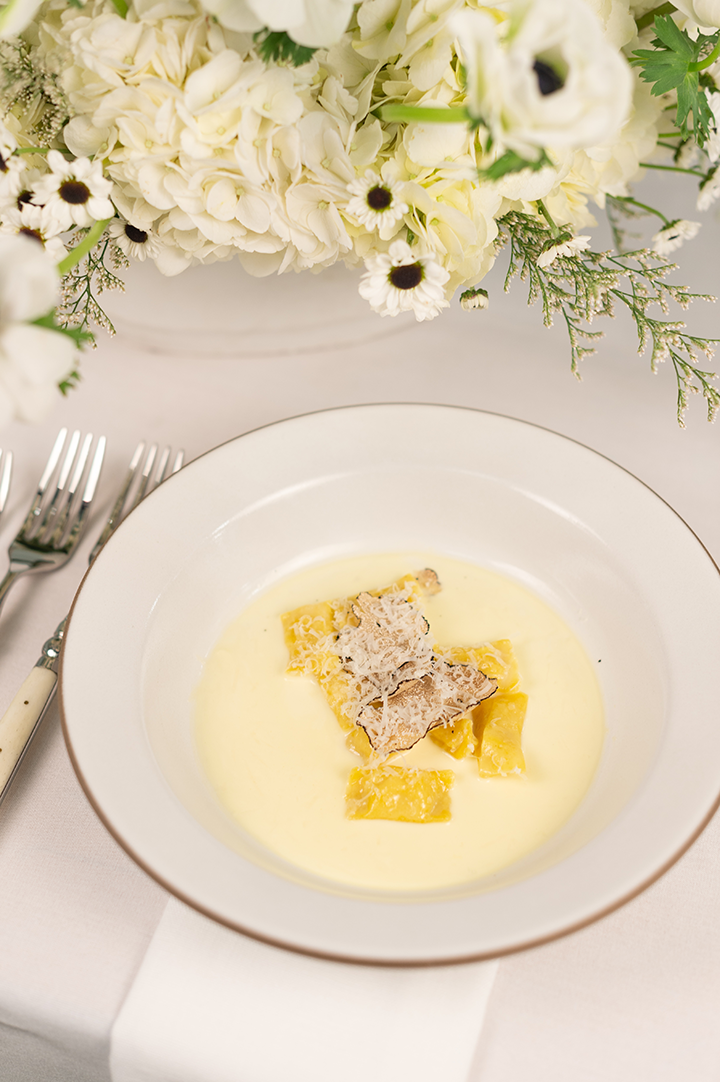
Sweet corn agnolotti with black truffle, Meyer Lemon ricotta, parmesan snow, and cornhusk nage. Photo courresy Lorely Meza
At 24 Carrots, we know we are more than “just a caterer.” We are driven by innovation, creativity, and unsurpassed service. This made the step into investing in creativity an easy decision. We want to provide more for our clients and for ourselves, so we lean in hard to the creative process. We want our displays, buffets, and overall service to be unique and very “24 Carrots.” In doing so, we not only create a new revenue stream, but we also provide endless amounts of creative opportunity across all departments within 24 Carrots.
To be successful, this commitment has to be made at the top of the organization. As CEO of the company, I push and support creativity throughout the company. I encourage vulnerability in the process and truly believe that we should be open to all ideas that come from our team. I also ensure we properly budget for new supporting rental inventory for our creative team each year. Having access to new and exciting display pieces and equipment keeps the creativity going throughout our organization and takes away some of the monotony that can happen when you cater over and over again each week.
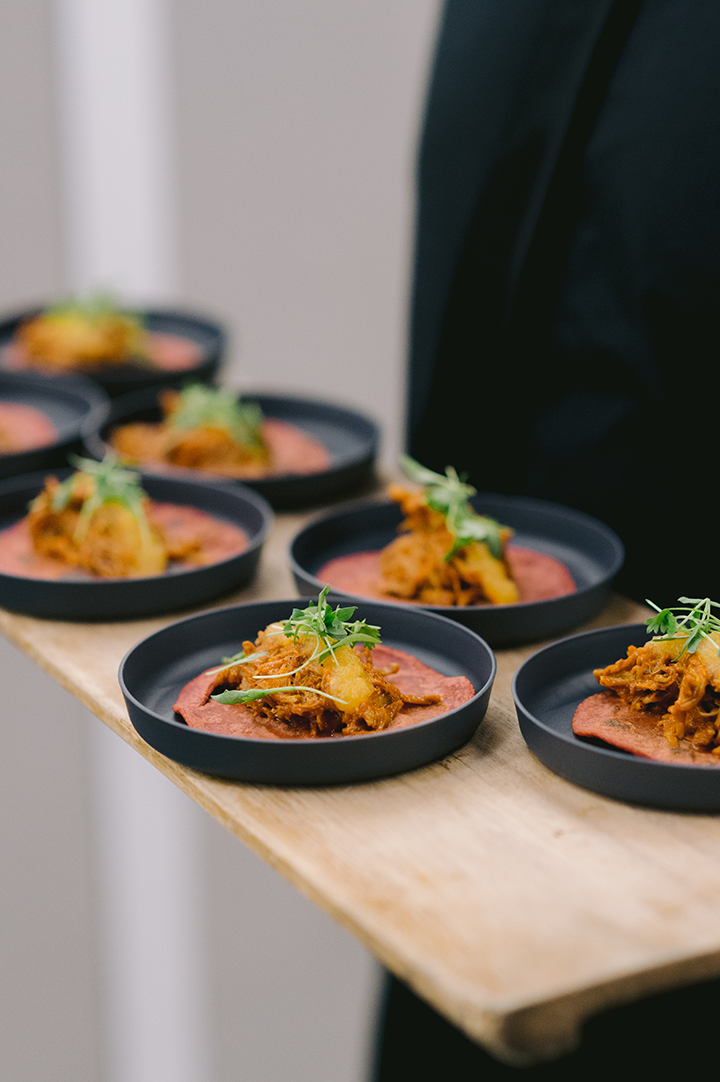
Mini Al Pastor Taco, pineapple chili chutney, beet tortilla. Photo courtesy Lorely Meza
Hire someone to drive your creative process. Someone needs to own it, stay on top of it, and drive it forward. It can’t be left as a floating idea throughout the organization. Having a creative manager on your team makes it real, focused, and tangible. This team member has an important role in collaborating with the sales, culinary, and operations teams and is a vital component to having a successful creative process. This person needs to be passionate about food, and they must be creative (of course), collaborative, organized, and have the ability to see opportunity and inspiration in their surroundings.
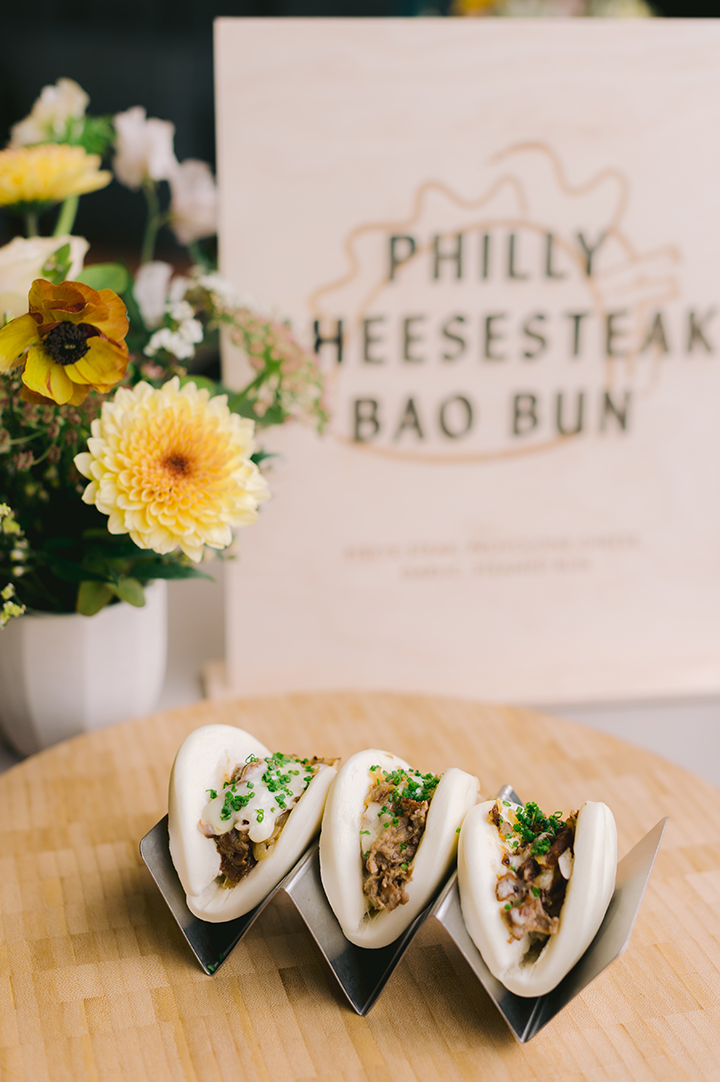
Philly Cheesesteak Bao Bun. Photo courtesy Lorely Meza
But most of all…
Have fun and take risks.
Push the boundaries.
Think outside of the box.
Bring creativity to the organization that is unique to you.
There is so much inspiration available to all of us. Take that inspiration and make it your own.
Know who you are as a company and add your twist to whatever inspires you at that moment. It isn’t always about coming up with the next super-unique idea that no one has seen before. It is about finding inspiration from everything around you and applying creativity based on the goal at hand.
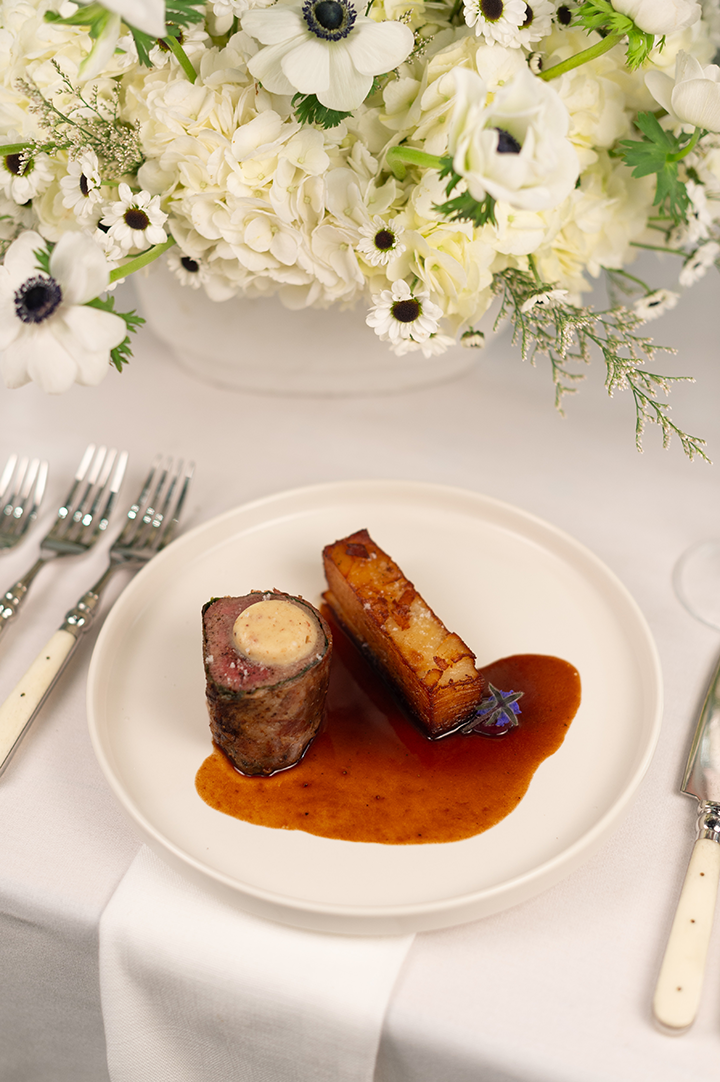
Seared Wagyu Beef Tenderloin Roulade, wilted red Swiss Chard, Iberico ham, potato pave, blackberry compote, and bone marrow jus. Photo courtesy Lorely Meza
Always remember that some of the craziest ideas morph into some of the very best ideas—so lean into those crazy ideas.


